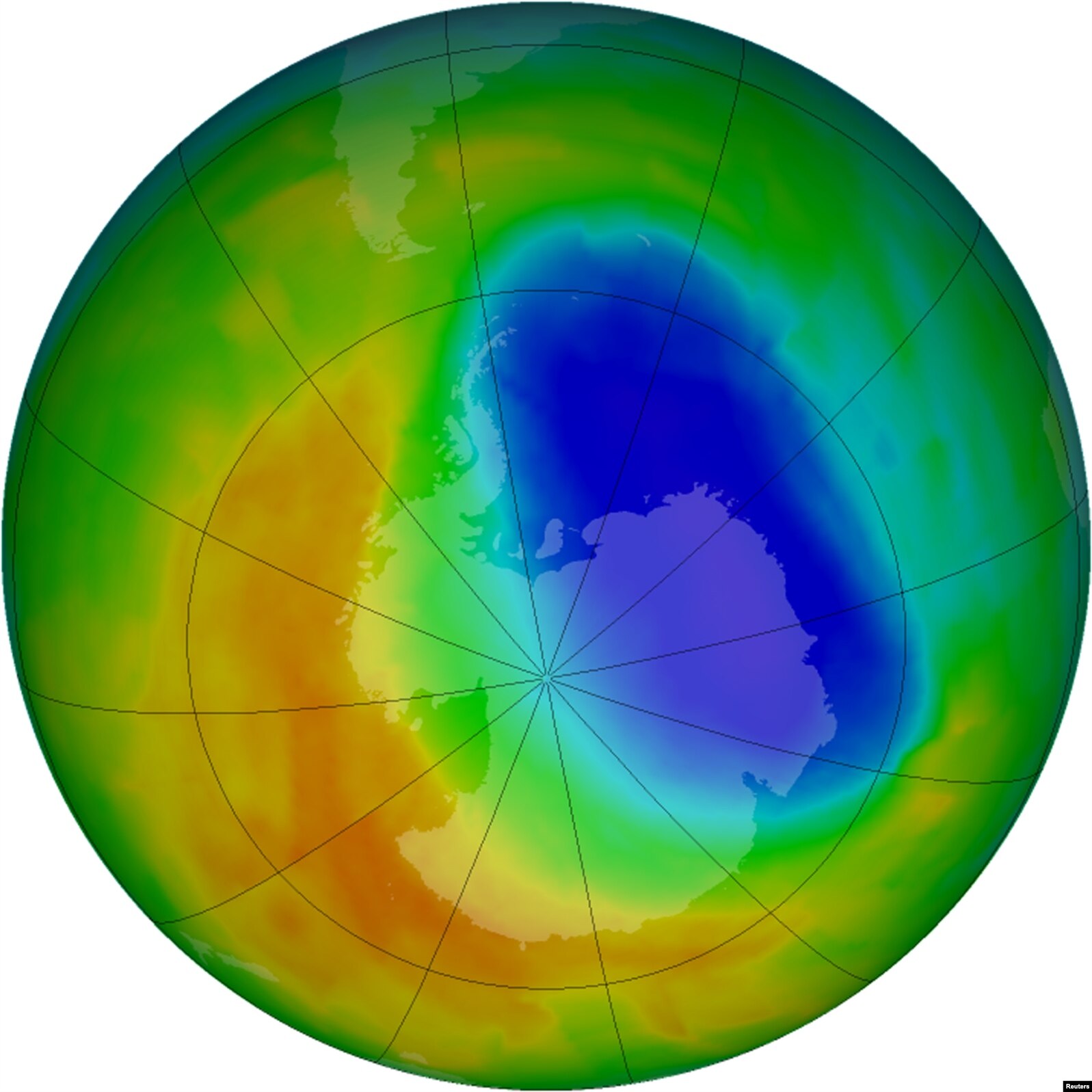If you were around in the '80s, you might recall the widespread fear over the discovery of a massive hole in the ozone layer over Antarctica. It's still there, but NASA says 2017 delivered a daintier hole than usual.
The last time the ozone hole was this small was in 1988 when Bobby McFerrin was burning up the charts with "Don't Worry Be Happy" and acid-wash jeans were the height of fashion.

A false-color view of total ozone over the Antarctic pole is seen in this NASA handout image released Oct. 24, 2012. The purple and blue colors are where there is the least ozone. The average area covered by the Antarctic ozone hole in that year was the second smallest in two decades, at 8.2 million square miles; in September 2017, it was 7.6 million square miles.
The ozone layer acts as a protective shroud over the Earth, blocking out ultraviolet radiation. NASA likens it to an atmospheric version of sunscreen. Our planet wouldn't be habitable without the ozone layer to help protect us from the sun. NASA and the US National Oceanic and Atmospheric Administration have been monitoring the ozone hole since it was first discovered in 1985. The agencies use satellites, weather balloons and ground-based instruments to study and track the hole.
The ozone hole changes throughout the year and reached its 2017 peak size on Sept. 11 at the end of the region's wintertime. Scientists weren't surprised by the size of the hole this year. "This is what we would expect to see given the weather conditions in the Antarctic stratosphere," says Paul A. Newman, a scientist at NASA's Goddard Space Flight Center. NASA cites warmer global temperatures as a factor in reducing the hole.
This animation shows changes in the ozone hole size over time.
NASA/NASA Ozone Watch/Katy Mersmann
But don't get too excited. NASA says the smaller hole "is due to natural variability and not a signal of rapid healing." The ozone hole still covered 7.6 million square miles (nearly 20 million square kilometers), or over two and a half times the size of Australia. Still, scientists are optimistic about the ozone hole eventually healing over time.
Since the alarming detection of the hole in the '80s, there has been an international effort to reduce substances that damage the ozone layer, including chlorofluorocarbons that were once commonly used in aerosols and as refrigerants. NASA says researchers expect the hole to return to 1980 levels by around 2070.
